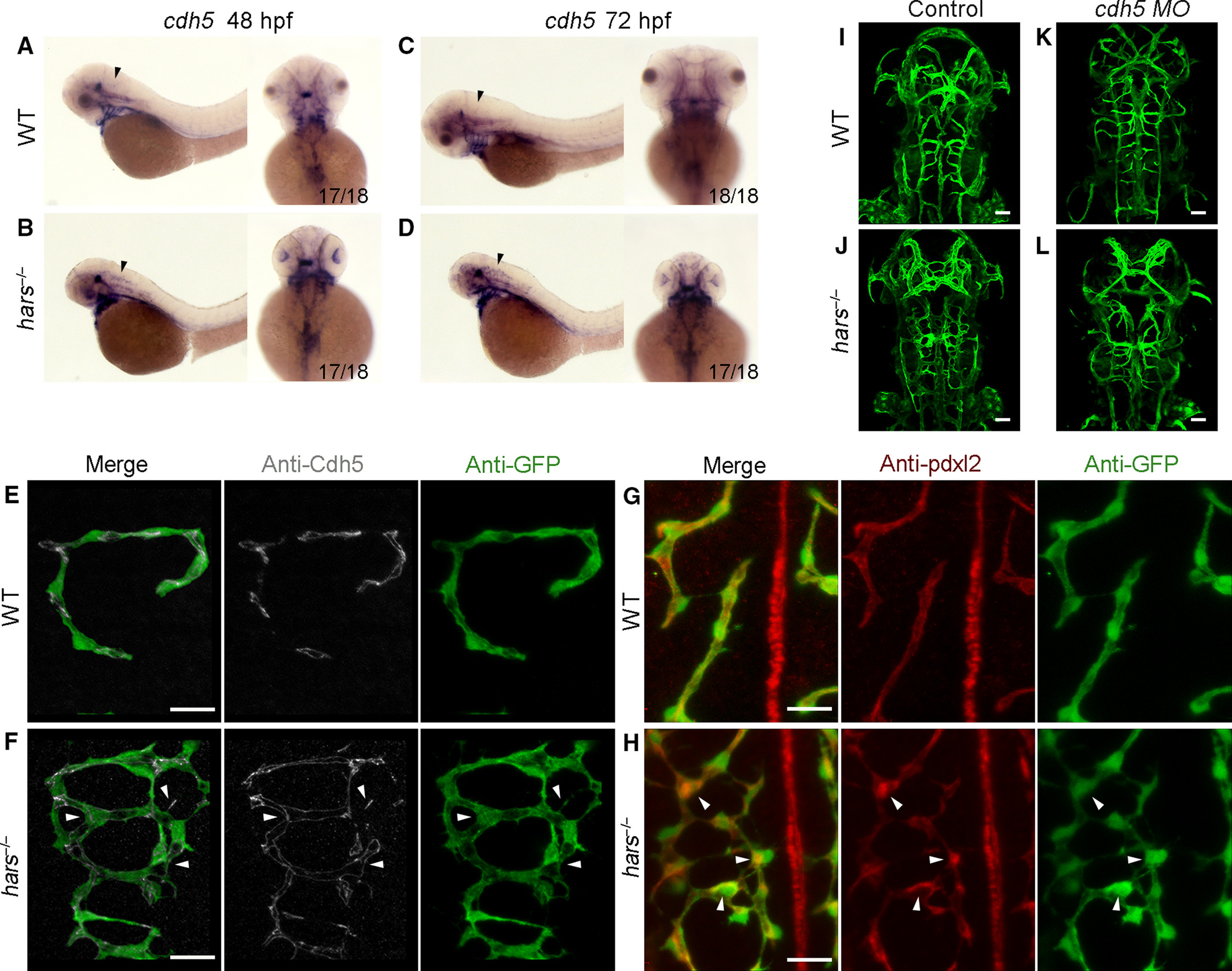Image
Figure Caption
Fig. 2
The gene responsible for the cq34 encodes Hars. (A) The cq34 mutation is located on the LG 14. Numbers below the SSLP markers indicate the genetic distance and the recombination events seen in 180 mutant embryos. (B) The hars genomic DNA sequence of WT and hars−/− shows a point mutation in the first base pair of intron 7–8 (substitution from G to A), causing deletion of exon 7. Exon bases are indicated in blue and intron bases in black. (C) Schematic representation of the secondary structure of Hars, which consists of WHEP, aminoacylation, and anticodon‐binding domains. The hars−/− mutant presents a partial deletion of the aminoacylation domain (amino acids: 211–243). (D) Sequencing the hars cDNA of WT and hars−/− shows the exon 7 deletion in mRNA level in hars−/−. (E) Western blotting shows the deletion in protein level in hars−/−, and α‐Tubulin serves as a loading control. (F) Whole‐mount in situ hybridization shows that the hars transcript is expressed in one‐cell stage embryos and thus is maternally supplied. It is expressed ubiquitously in the embryo at later stages. (G–K) Injection of WT hars mRNA prevents the appearance of body defects and ectopic brain vascular branching typical of the cq34 mutant at 72 hpf. (L,M) Inhibition of protein synthesis by CHX treatment between 36 and 48 hpf leads to reduced and thinner brain vasculature, and DMSO treatment was used as control. (N) In vivo Hars activity measured by ELISA assay. n = 3 tubes of lysates, mean ± SD, NS, not significant, Student's t‐test. Scale bars, 50 μm.
Figure Data
Acknowledgments
This image is the copyrighted work of the attributed author or publisher, and
ZFIN has permission only to display this image to its users.
Additional permissions should be obtained from the applicable author or publisher of the image.
Full text @ FEBS Open Bio

